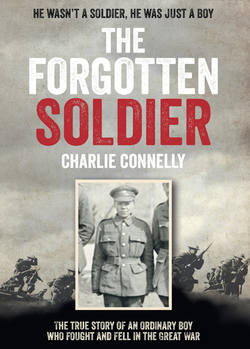Читать книгу The Forgotten Soldier: He wasn’t a soldier, he was just a boy - Charlie Connelly, Charlie Connelly - Страница 14
8 ‘If you are not in khaki by the 20th, I shall cut you dead’
ОглавлениеThe stone cross of the Boughton Aluph war memorial stood silhouetted starkly against the sky, with around thirty names from the First World War, including three sets of brothers.
I couldn’t really define why but there was something particularly forbidding about this memorial. It could have been that the sun had gone in, the wind was whipping up and the late afternoon was turning chilly. Boughton Aluph has a large, triangular green, with houses and a pub on two sides embracing the village cricket field. The memorial stands away, on the furthest part of the green, facing away from the houses, with its back to the pub and cricket pitch. The image of its simple cross, stark against the grey sky as I’d approached, stuck with me, and later I investigated some of the names on the stone. They ranged from the teenaged to the middle-aged, and their deaths covered every year of the war (one man had even died in 1920, the result of injuries and shock sustained by being wounded and buried alive in a shell explosion).
There are thousands of these memorials in Britain (estimates of their numbers range wildly between 54,000 and 70,000), each of them the gateway to stories and lives, some remembered, some forgotten. Every one of those thousands of memorials can be taken individually, and a narrative of the Great War constructed from them – from vast, ornate, mournful angel-topped plaques listing hundreds of dead in the centre of a city to a handful of names on a simple stone in a remote hamlet, the story of one is the story of them all. The story I was pursuing is multiplied millions of times over by every man that went to war and never came back, every name on every last weather-beaten, forsaken, moss-smeared tablet that commemorates the fallen.
Continuing east I crossed the Great Stour, paused at the level crossing and arrived in Wye, grateful for a bed and a warm eyrie room high up in the King’s Head. The window afforded a view across the rooftops to the giant crown carved into the hillside chalk to celebrate the coronation of Edward VII in 1902, as the nation came to terms with the end of the Victorian age and ushered in the Edwardian.
Early the following morning I found myself standing above the crown looking back at Wye from the opposite aspect. I continued over the top of the Downs through the villages of Stowting and Etchinghill, before arriving in Folkestone.
